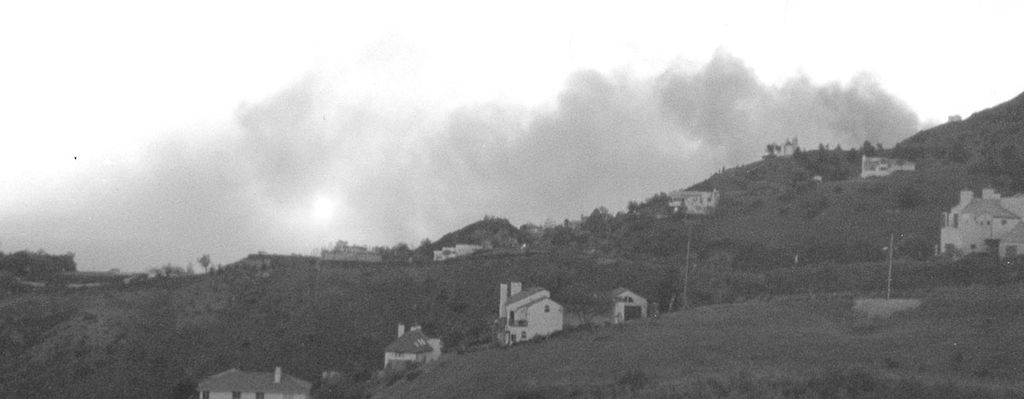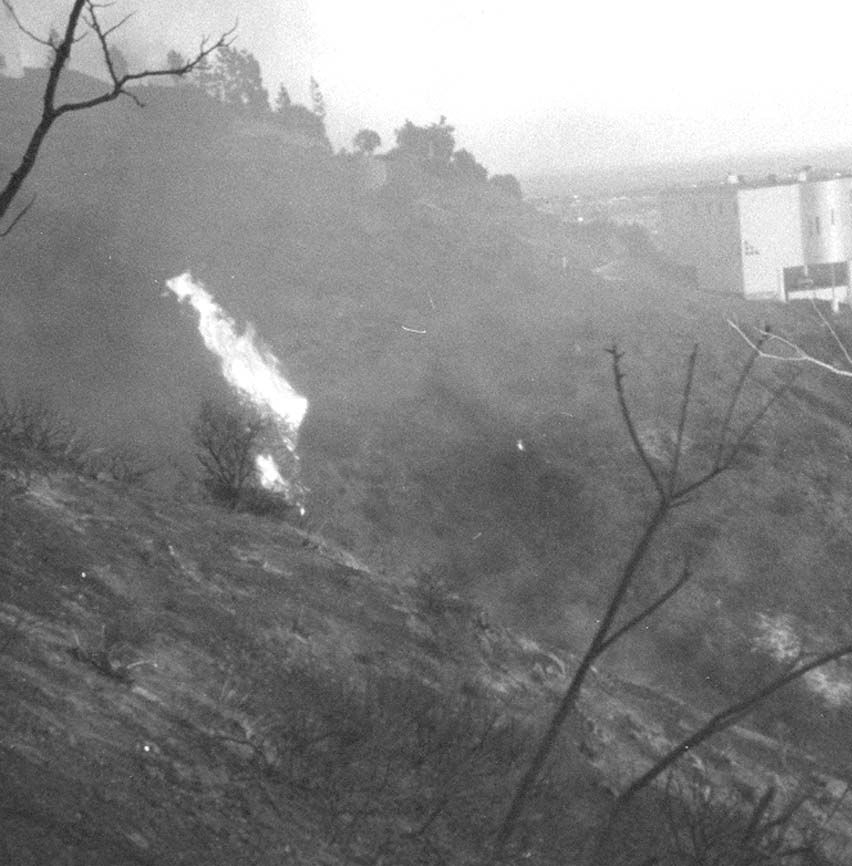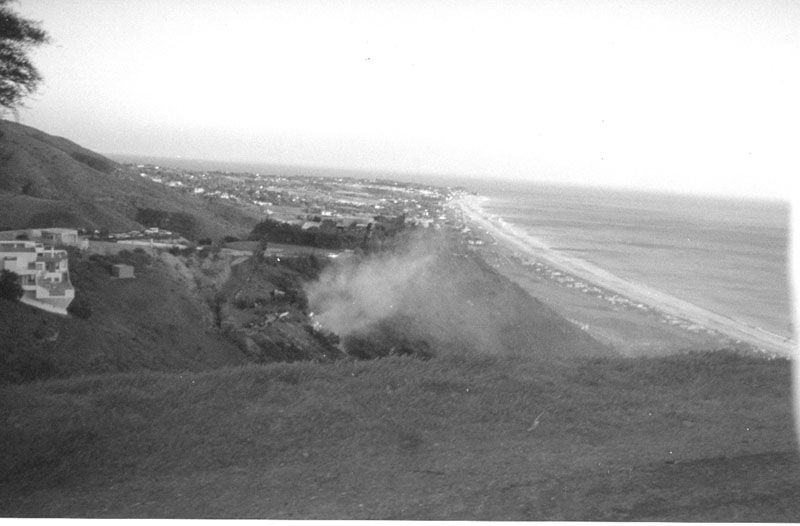Brush clearance, Mother Nature help keep damage to only three homes.
By Joann Groff
Assistant Sports Editor
This round of Malibu fires is down for the count, but not without leaving 1,300 acres charred and three homes damaged. The stream of fires doesn’t compare to those in the past as far as destruction, but they did inspire an element of fear due to particularly harsh winds.
 Although the fires burned as close as two miles from Pepperdine, the winds were blowing away from campus and the fire never came any closer.
Although the fires burned as close as two miles from Pepperdine, the winds were blowing away from campus and the fire never came any closer.
The fires started Jan. 5 in Latigo Canyon and Corral Canyons, burning only 15 acres. Firefighters had the flames fully contained by 4 a.m. the next day.
“We were in our place in Latigo Canyon and we started smelling smoke,” sophomore Amanda Levett said. “We went downstairs, and everyone in our building was flooding outside. Power lines fell right in front of our apartment and ash was blowing in everyone’s eyes.”
LeVett said she’s only lived in the area for a year and a half, making this fire experience her first.
“I’ve never been in a fire before,” she said. “I can handle earthquakes, but fires are definitely something new to me. It was a scary experience.”
At 9:30 a.m., power lines fell at Trancas and Broad Beach, starting the fire that would threaten many more homes, streets and schools. Flames spread to Encinal and Decker Canyons, and over the next 25 hours they would burn dangerously close to many million-dollar mansions nestled in Malibu’s hills.
Pepperdine students who live north on Pacific Coast Highway said they settled into a state of uneasiness, knowing the fires were being provoked by unpredictable winds and that the flames had a chance of moving toward them.
 “We could see the flames from our porch, but they were a few miles up north on Pacific Coast Highway,” sophomore Jenny Yang said. “All my roommates were very nervous, because we knew any moment could be our last in our house. We knew the fire could shift directions at any time.”
“We could see the flames from our porch, but they were a few miles up north on Pacific Coast Highway,” sophomore Jenny Yang said. “All my roommates were very nervous, because we knew any moment could be our last in our house. We knew the fire could shift directions at any time.”
Fortunately for Pepperdine students, it didn’t. The campus was never evacuated thanks to the 1,036 firefighters, six bulldozers, five helicopters and two water tankers on scene. Various departments from Orange, Ventura, Santa Barbara and San Luis Obispo arrived to assist Los Angeles County in combating the fire. They were aided by 56 agencies, including the Sheriff’s Department which evacuated 100 homes.
Pepperdine did monitor the situation very closely, however. Director of Public Safety Earl Carpenter said part of the university’s Emergency Operations Center convened to assess the potential threat to Pepperdine.
Carpenter, Vice President and General Counsel Gary Hanson and Director of Insurance and Risk Management John Watson were among those present.
Some professors, meanwhile, were assessing the threat to their own homes.
“I live in Malibu West. We didn’t need to evacuate, but I absolutely felt very threatened,” Teacher Education professor Betty Glass said. “The fire started right on the edge of Malibu West. (My husband and I) have lived here since 1969, and we’ve seen a lot of fires. I didn’t panic, just got in my car, and started driving up the hill. That’s when I saw that it was worse than I thought.”
After fires in 1996 quickly burned through the canyon and entered the Pepperdine campus with practically no advance warning, Carpenter said DPS now monitors fires in the Santa Monica Mountain region more aggressively.
Carpenter and David Stevens, assistant director of Public Safety, were present at the command center, assessing the threat to Pepperdine.
This time, there was no need for a campus evacuation.
“At no time was the campus threatened during these two fires,” Carpenter said.
Stevens also noted that it’s difficult to gauge whether a fire two miles away poses an immediate threat to the university.
“Two miles could be 30 minutes, three hours … and it could be never,” he said.
 Other areas needed evacuation, however. In addition to the evacuated homes in Encinal and Decker Canyons, Malibu High School, Juan Cabrillo Elementary School and Malibu Methodist Preschool were closed Tuesday. Evacuees were sent to Leo Carrillo State Park and Sycamore Cove Park.
Other areas needed evacuation, however. In addition to the evacuated homes in Encinal and Decker Canyons, Malibu High School, Juan Cabrillo Elementary School and Malibu Methodist Preschool were closed Tuesday. Evacuees were sent to Leo Carrillo State Park and Sycamore Cove Park.
As of 11:35 a.m. Tuesday, only 10 percent of the fire had been controlled, but by 6:45 p.m., the firefighters had completely contained the blaze.
“We rose to the challenge and did a good job,” Assistant Fire Chief Paul Schuster said.
Firefighters perched themselves on the edges of the homes, where flames burned precariously close Monday. The Encinal Canyon evacuation was mandatory as firefighters said 250 homes were threatened. Three homes and a car were significantly damaged.
“If the wind would have changed directions, we would have had a major problem,” Glass said. “It’s hard to say, ‘oh, goody, it is going toward those other people’s homes,’ but what can I say, I was relieved.”
Other injuries included two California Highway Patrol officers who were hit while directing a road block at Kanan Dume and Pacific Coast Highway Monday at 10 p.m. Officers Allen Lindquist and Daniel Morgan were airlifted to UCLA Medical Center and were listed in stable condition the following day.
January 16, 2003

